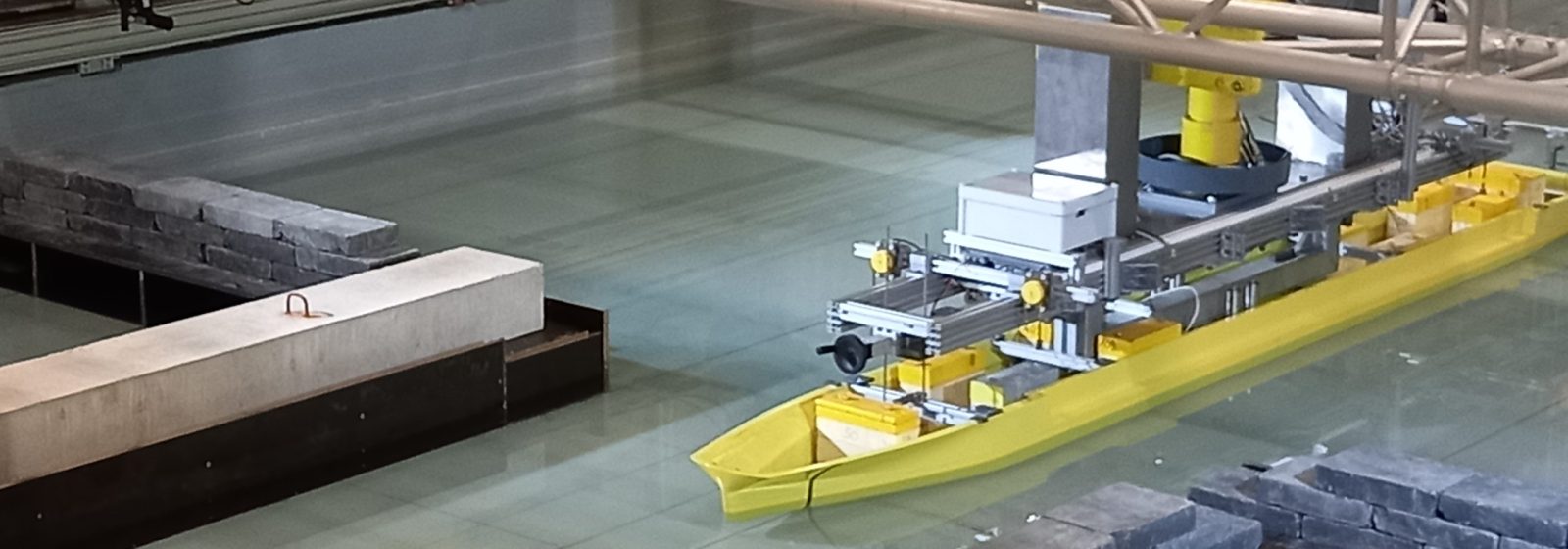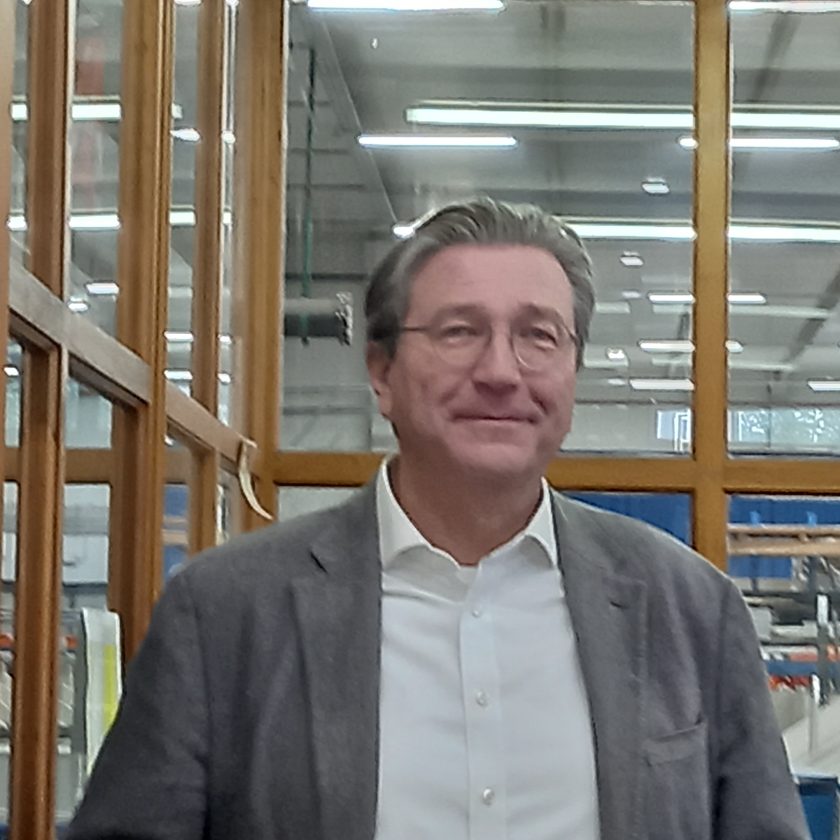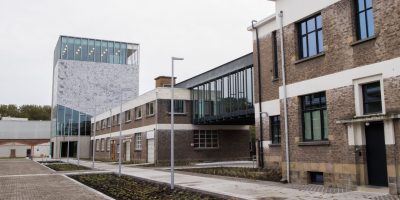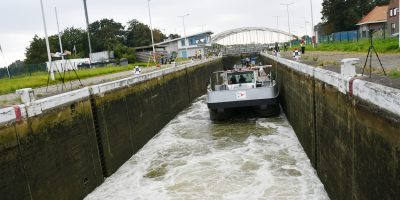Barge model ‘X-Barge’ undergoes test for ship resistance

A ship model of Zulu Associates’ new inland navigation concept ‘X-Barge’ is currently being tested for ship resistance at the Hydraulic Laboratory in Borgerhout. The first X-Barges should sail by mid-2025.
The X-Barge is an 85-metre barge and has a CEMT class IV (CEMT classes align the dimensions of waterways in Western Europe). Antoon Van Coillie, CEO of Zulu Associates, first proposed the X-Barge concept in May 2022. In August 2023, he signed an agreement with the Hydraulic Laboratory in Borgerhout, part of the Department of Mobility and Public Works (MOW), to study energy efficiency and, if necessary, optimise the hull shape. That research was launched this month and will continue until the end of May.
Tug
A model of the X-Barge coupled to the tow truck is propelled for this purpose in a simulated channel in the laboratory’s tow tank. “With this, we measure the resistance of the vessel in narrow waterways where there is greatly increased resistance for a given speed,” explain Steven Kaptein, managing director Flanders Hydraulics EV, and Thibaut Van Zwijnsvoorde, nautical expert. “We impose a movement and measure all the forces. We mainly focus on resistance and slump depending on water depth, straight or sloping banks and so on.”
This is a very different business model for inland navigation
The ship’s design is by Naval Dynamics and the design was analysed by UK-based Cape Horn. “The latter company analysed the ‘flow dynamics’ to determine how much energy is needed. The tests are part of the economic model for this new concept, namely autonomous sailing with no one on board and sailing at night. This also means that the locks will have to be operated 24h/24h,” says Van Coillie.
“With this business model, we can still be competitive against fossil fuels with alternative forms of energy. So the ship can also contribute to modal shift by making inland navigation more competitive and sustainable. This is a very different business model for inland navigation. We are very excited about the response from the Hydraulic Laboratory. Everything seems to indicate that we do not need to optimise the hull further,” he continues.
The certification is also simple because there are no hydrogen or other energy sources under the deck
The hull of the ship is optimally hydrodynamic. The ship is fully electric below deck and gets power packs on deck. “It can carry slightly less cargo than a classic 85-metre ship, 90 teu instead of 110 teu, but it consumes less energy. If we switch to another power source, it doesn’t change the design. Certification is also easy because there are no hydrogen or other energy sources under the deck,” says Van Coillie.

Mid-2025s
The aim is to launch the first X-Barges in mid-2025. “We want to build them in large numbers according to a standardised model. The vessels are equipped for autonomous navigation and will have a ‘dynamic positioning’ system that will allow them to manoeuvre more smoothly. The energy on board will be in 20′ containers that are exchangeable. We are in final discussions with a first customer for a time charter for container shipping. The route on which the vessels will operate is between Ghent and Lille and between Ghent and Antwerp and the Albert Canal. In principle, construction could start after the summer so that the first vessels could sail by mid-2025. The vessels will be built in Europe,” Van Coillie concludes.




